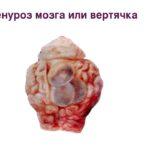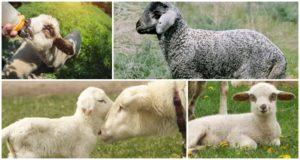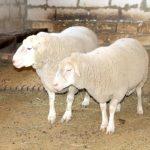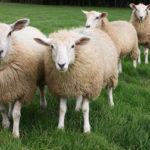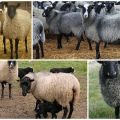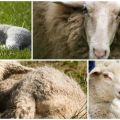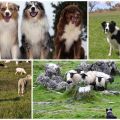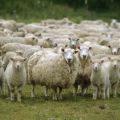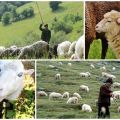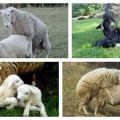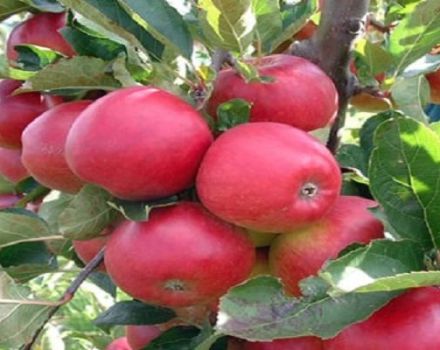Symptoms and signs of coenurosis in sheep, treatment methods and prevention
Coenurosis affects sheep of the age group under 2 years of age. Most often, individuals with a weakened immune system are ill. The spread of the disease are human helpers - dogs, as well as wolves, jackals or foxes. Infection occurs regardless of the season, since the pathogenic bacteria that cause the disease are not afraid of either frost or heat. There are 4 stages of coenurosis.
Biology of the causative agent
The causative agent of coenurosis is the bacterium Coenurosis cerebralis, which "settles" in the brain or spinal cord of the animal. From the embryo of a cestode, a larva develops, in the process of growth acquiring the shape of a bubble filled with a transparent liquid. On the inner layer of the shell, there are embryonic scolexes, in the amount of 700 or more.
The science of parasitology, which studies the biology and etiology of harmful bacteria, has established that a semi-mature parasite reaches 60-80 cm in length and consists of 200-250 segments. Development takes place in an intermediate host, which is often dogs.
Varieties of the disease
There are 3 types of coenurosis:
- Serial. It affects animals of the Zaitsev family. Cenuroses are concentrated in the muscular connective tissue, the spinal canal, the abdominal and chest cavity, the eyeballs or in the heart.
- Scriabin. Cestode larvae penetrate and develop in the muscle tissue of sheep.
- Cerebral. An invasive disease of sheep that affects the central nervous system. Localized in the brain (less often in the spinal cord).
Infection occurs in a pasture or watering hole, when the animal, along with food or drink, swallows the eggs of parasites.
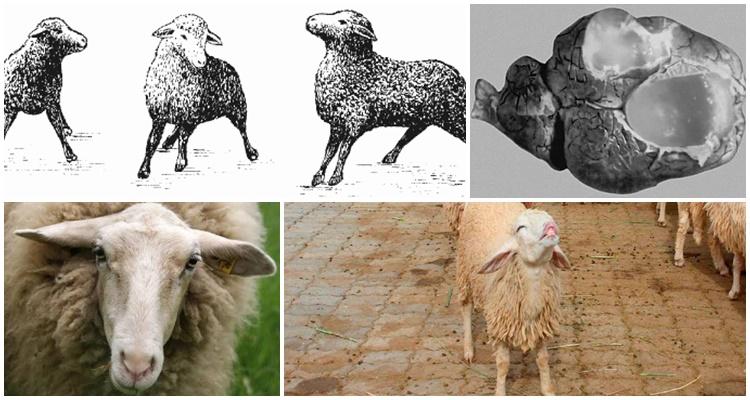
Signs and symptoms of lesion
The disease manifests itself after 16-22 days after infection. The risk of infection is significantly increased if sheep are kept in unsanitary conditions or are fed poor quality feed. After entering the animal's body, parasites are transferred to the brain tissues with the blood stream.
Sick individuals look healthy for a long time. But the bubble grows, affects the brain, leads to disturbances in the functioning of the central nervous system: atrophy, anemia.
Symptoms of the disease differ depending on the location of the cenures, their number and size. Signs of sheep disease:
- if the cerebellum is damaged, coordination is impaired, paralysis is possible;
- the helminth has settled in the frontal lobe - the mammal, with its head lowered, rests against something and stands motionless;
- tsenur settled in the back of the head - the sheep, raising its head high, moves back;
- if the larvae are located in the spinal cord, the animal has a wobbly gait, with a slight pressure on the croup, it falls on its hind legs;
- damage to the temporal lobe is accompanied by circular movements of the head of the sick individual.
There are 4 stages:
| Phases of the disease | Duration, day | Symptoms |
| I - initial | 1-21 | There are no external signs of the manifestation of the disease |
| II - acute | 2 to 30 | The animal loses its appetite, stunted. Sheep stand with legs apart, head bowed |
| III - the period of development of bacteria | 7-8 months | Infected individuals are no different from healthy ones |
| IV - exacerbation | 30-45 | When the brain is damaged, sheep raise or lower their heads, vision problems are observed. If parasites have settled in the spinal cord, paralysis sets in, convulsions are possible |
If you do not take action, sick individuals die after 1-2 months after the onset of the exacerbation phase.
Diagnostic methods
The diagnosis is made on the basis of the manifestations of the disease, as well as by palpating the animal's skull. In places where the parasite is localized, the bones become thinner and softer. If the cenura has settled in the upper lining of the brain, the bladder may protrude.
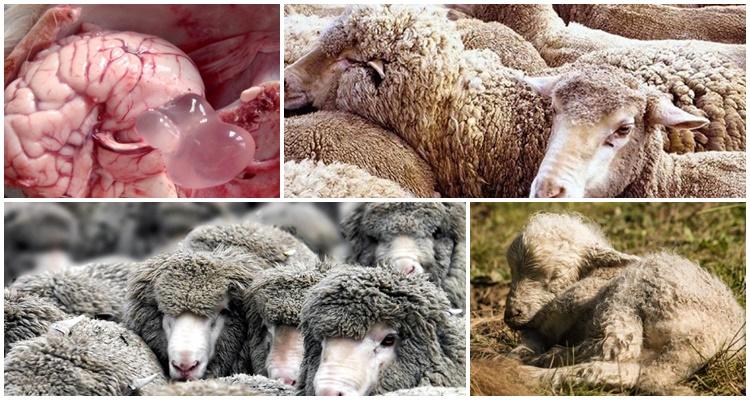
To confirm the correct diagnosis, the animal's nasopharynx should be examined. With cenurosis, the presence of mucus and purulent discharge is traced. 1-2 months before the active growth of bacteria (III phase of the development of the disease), the ailment is diagnosed by the eyes of the animal:
- the size and color of the optic nerve changes;
- the whites of the eyes turn red from multiple hemorrhages.
The most accurate diagnosis is made by the allergic diagnostic method. An antigen is injected into the skin of the upper eyelid. If the thickening of the skin does not disappear 6 hours after the injection, the fundus of the animal is examined, and the cerebrospinal fluid (CSF) is taken for analysis.
Treatment methods
Sheep coenurosis is treated in 2 ways:
- Surgical. Trepanation of the cranial bone is performed, the bladder is punctured, fluid is aspirated, and the tsenur shell is removed. The lack of fluid is compensated by an antiseptic. In 8 out of 10 cases, the animal is fully recovered.
- Medication. The therapy is carried out at any stage of the disease in sheep. Chemotherapy of sick individuals with drugs ("Albendazole", "Niclosamide", "Praziquantel", "Fenbendazole", "Sipikur", "Finkur"), causing the death of helminths, is performed. After that, to remove inflammation, glucocorticoid drugs are prescribed.
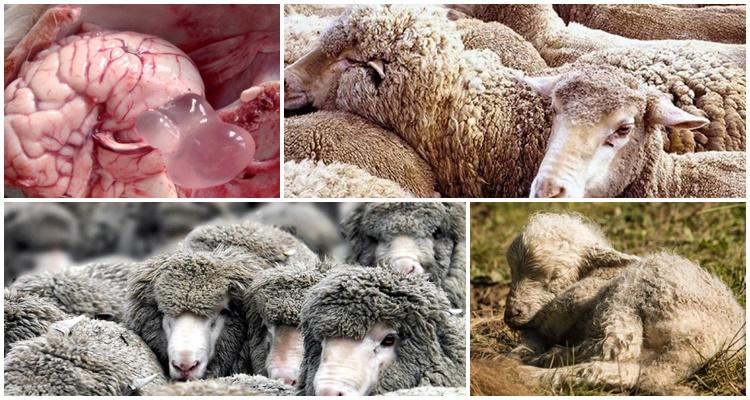
They operate only breeding or valuable sheep breeds. In other cases, either drug therapy is carried out, or infected individuals are slaughtered.
Prevention
An unbalanced diet, mud in the sheepfold leads to a weakening of the immunity of animals, and increases the likelihood of infection with coenurosis. To keep the flock safe, it is necessary to adhere to the sanitary requirements for keeping sheep. Preventive measures:
- Regular deworming of dogs if they help herd and guard sheep. It is forbidden to feed them the meat of infected animals. 1 four-legged watchman can release up to 10 million helminth eggs per day.
- Protect the grazing area from stray animals.
- Since young sheep are most often infected with coenurosis, their diet should be carefully monitored. The lambs' menu should include mineral and vitamin supplements.
- Systematic cleaning and antiseptic treatment of the barn.
In order to timely identify coenurosis and other ailments, you should regularly invite a veterinarian to examine the livestock.
Danger of disease for humans
Cenurosis is an ailment that poses a danger not only to animals, a person can also get sick.The larvae do not lose their ability to infect for a long time (up to 6 months). They are not affected by temperature drops, unfavorable climatic conditions.
Hands should be thoroughly washed after caring for sick sheep. Otherwise, once in the body, the larvae lead to the development of coenurosis in humans. According to statistics, in humans, cases of infection are extremely rare.
There is still no clear answer as to whether it is possible to eat the meat of a sick animal. Some parasitologists advise burning the carcasses of diseased sheep, others recommend subjecting the mutton to deep heat treatment. But they cannot yet say with confidence that during use there will be no infection with helminths. Compliance with preventive measures and rules for keeping sheep will help to avoid economic losses for the treatment and disposal of sick animals.

